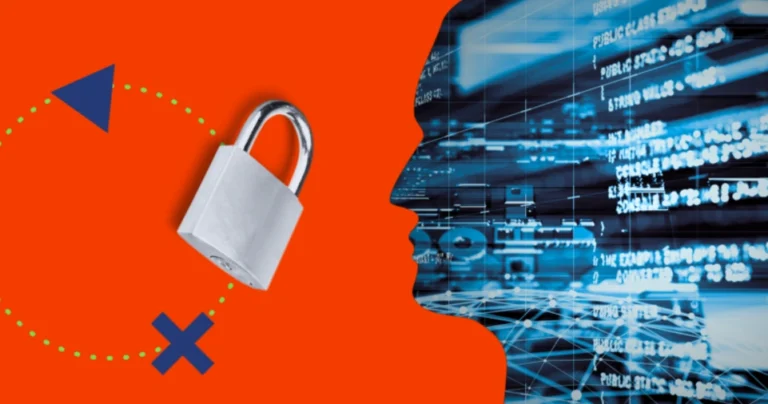Cryptocurrencies are reshaping the financial landscape, but with their innovation comes the necessity for robust security measures.
A security audit ensures the transparency, safety, and trustworthiness of crypto projects, protecting investors and stakeholders from potential vulnerabilities.
In this guide, we’ll walk through the steps and best practices for conducting a comprehensive security audit of a cryptocurrency project.
This process is not only about identifying risks but also about fortifying the project against future challenges, fostering user confidence, and contributing to the broader stability of the crypto ecosystem.
What is a Security Audit for Crypto Projects?
A security audit is a thorough assessment of a crypto project’s codebase, protocols, and infrastructure to identify vulnerabilities, ensure compliance, and evaluate the robustness of its security measures.
These audits involve a combination of automated tools, manual reviews, and adherence to industry best practices, making them a cornerstone of any successful cryptocurrency project.
Why Are Security Audits Necessary?
- Protect Investors: Safeguard against scams, fraud, and hacks that can jeopardize user funds.
- Ensure Compliance: Meet regulatory standards to avoid legal complications and build legitimacy.
- Build Trust: Enhance credibility among users and investors, ensuring sustained engagement.
- Mitigate Risks: Identify and fix vulnerabilities before they can be exploited by malicious actors.
- Enhance Transparency: Promote openness by validating claims made by the project, such as reserve holdings or transaction integrity.
Steps to Conduct a Security Audit
Define Scope and Objectives
Start by outlining the scope of the audit. Identify key areas to examine, such as:
- Smart contracts
- Blockchain protocols
- Wallet infrastructure
- User authentication and authorization mechanisms
- API endpoints and third-party integrations
Example: If auditing a DeFi platform, prioritize smart contracts and liquidity pool mechanisms, as these are frequently targeted by attackers.
Assemble a Competent Audit Team
Choose experts in blockchain technology, cybersecurity, and cryptography. Consider leveraging third-party auditors with proven experience.
Ensure the team includes professionals familiar with the specific blockchain network (e.g., Ethereum, Solana) and tools.
Collect Relevant Documentation
Gather all necessary documentation, including:
- Source code
- Transaction histories
- Whitepapers and technical specifications
- Deployment procedures and configuration files
Proper documentation not only streamlines the audit but also ensures all relevant details are considered.
Perform Risk Assessment
Identify potential vulnerabilities in the project’s infrastructure and operational workflows. Categorize these risks based on severity to prioritize mitigation efforts effectively.
Code Review
Conduct a detailed examination of the project’s codebase to uncover:
- Logical errors
- Security loopholes
- Non-compliance with coding standards
- Inefficient gas usage (for smart contracts)
Example: Tools like MythX, Slither, and Echidna can automate vulnerability detection in smart contracts, saving time while ensuring comprehensive coverage.
ALSO READ: How to Use a Stop-Loss Strategy in Crypto Trading
Evaluating Security Measures

Blockchain Security
Examine the consensus algorithm, encryption standards, and network integrity.
Validate that the blockchain is resistant to attacks and adheres to best practices for decentralized ledger systems.
| Aspect | Questions to Ask |
|---|---|
| Consensus Protocol | Is it resistant to Sybil and 51% attacks? |
| Encryption | Are encryption methods up to date and industry-standard? |
| Network Design | Is the network robust against DDoS attacks? |
Wallet Infrastructure
Ensure wallets are secure by assessing:
- Private key storage and management
- Multi-signature functionality
- Backup and recovery procedures
Tip: Evaluate the use of hardware wallets or secure enclaves for storing private keys to reduce exposure to hacking.
Smart Contracts
- Review code for vulnerabilities like reentrancy, integer overflows, and unprotected external calls.
- Test contracts against common exploit scenarios using tools and manual penetration testing techniques.
Example: A bug bounty program can incentivize external developers to identify vulnerabilities in exchange for rewards, providing an additional layer of security.
Verifying Reserves and Transparency
- Confirm the accuracy of disclosed reserves to ensure that claims made by the project align with reality.
- Cross-verify reserves with blockchain transaction records to validate ownership and availability.
- Investigate discrepancies to uncover potential fraud or mismanagement.
| Reserve Verification Steps | Action Items |
|---|---|
| Cross-Check with Blockchain Data | Compare on-chain data with disclosed reserves. |
| Reconcile Transactions | Identify mismatches in transaction records. |
| Analyze Suspicious Activity | Investigate unusual transaction patterns. |
Case Study: Reserve Audit
A recent audit of a prominent stablecoin project revealed discrepancies between reported reserves and actual on-chain holdings.
By implementing real-time reserve monitoring, the project addressed transparency concerns and regained user trust.
Reporting Findings
Document Observations
Compile a detailed report summarizing:
- Audit procedures
- Key findings
- Areas for improvement
- Severity levels of identified issues
Provide Recommendations
Offer actionable suggestions to address vulnerabilities and enhance security measures.
Example: “Implement rate-limiting on API endpoints to prevent abuse by bots or malicious actors.”
Best Practices for a Successful Audit
- Use Automated Tools: Leverage tools like SolidityScan, MythX, and Slither for efficient code analysis and quicker identification of vulnerabilities.
- Collaborate with Reputable Firms: Partner with well-known blockchain security firms to enhance credibility and gain access to advanced testing methodologies.
- Conduct Regular Audits: Periodic audits ensure the system remains secure against evolving threats and aligns with the latest security standards.
- Involve the Community: Encourage the community to report bugs and vulnerabilities, fostering collective responsibility for security.
- Stay Updated: Regularly update the project’s codebase to incorporate the latest security patches and improvements.
ALSO READ: How to Create Your Own Cryptocurrency
Conclusion
Conducting a security audit of a crypto project is essential to safeguarding assets, ensuring compliance, and building user trust.
By following these steps, projects can proactively identify vulnerabilities, enhance their security posture, and contribute to a safer blockchain ecosystem.
Ready to secure your crypto project? Conduct your audit today and safeguard your users. For expert guidance, explore TechInscriber’s resources on blockchain security.











